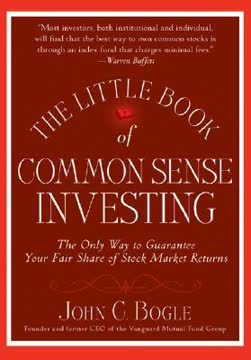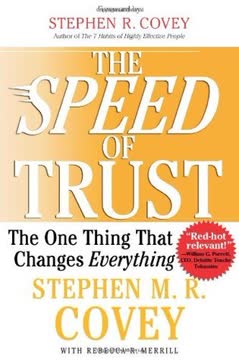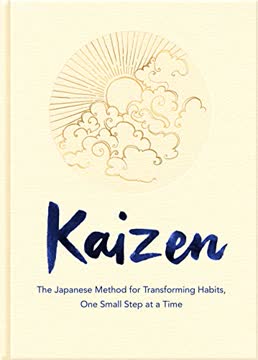Key Takeaways
1. Roots and Prefixes: The Building Blocks of Vocabulary
"Learning roots is helpful for beginning students of vocabulary, because it allows them to group similar words around a small and thus easier to memorize segment of that word."
Understanding word origins is key to expanding vocabulary efficiently. Many English words are built from common roots, prefixes, and suffixes, often derived from Latin, Greek, or other languages. By learning these components, you can often deduce the meanings of unfamiliar words.
Common prefixes and their meanings:
- pre-: before (e.g., preamble, prescient)
- in-/im-: not or in (e.g., inscrutable, imbibe)
- ex-: out of (e.g., exonerate, expurgate)
- con-: with (e.g., confluence, convivial)
Common roots and their meanings:
- -mit: to send (e.g., transmit, emit)
- -graph: to write (e.g., biography, calligraphy)
- -pathy: feeling (e.g., empathy, apathy)
By recognizing these patterns, you can often guess the meaning of new words and remember them more easily. For instance, knowing that "path-" relates to feeling helps you understand words like "apathetic" (without feeling) or "sympathetic" (feeling with).
2. False Friends and Commonly Confused Words: Avoiding Language Pitfalls
"Some words might have familiar-looking roots or even words in them, but the actual definition is not what you think."
Beware of misleading words. English is full of words that look or sound similar but have different meanings. These "false friends" can lead to misunderstandings and errors in communication.
Common pairs of confused words:
- Affect (verb) vs. Effect (noun)
- Discreet (cautious) vs. Discrete (separate)
- Imply vs. Infer
- Complement vs. Compliment
Additionally, some words have counterintuitive meanings:
- Inflammable (easily set on fire) means the same as flammable
- Nonplussed means confused, not unimpressed
- Enormity refers to great wickedness, not enormous size
Understanding these distinctions improves precision in language use and helps avoid common mistakes. It's crucial to verify the exact meaning of words, especially in formal or professional contexts, to ensure clear and accurate communication.
3. Words from Other Languages: Enriching English Vocabulary
"English words are derived from a smattering of languages across the globe, including the following from Dutch, Turkish, Arabic, and more."
English is a linguistic melting pot. Many words in English have been borrowed or adapted from other languages, reflecting the diverse cultural influences on the language throughout history. These loanwords often retain a flavor of their original culture and can add nuance or specificity to expression.
Examples of words from various languages:
- French: avant-garde, coup d'état, déjà vu
- German: kindergarten, zeitgeist, wanderlust
- Spanish: siesta, fiesta, macho
- Japanese: tsunami, karaoke, origami
- Arabic: algebra, coffee, safari
- Hindi: jungle, pajamas, shampoo
Understanding the origins of these words can provide insights into their usage and connotations. For instance, "zeitgeist" (from German, meaning "spirit of the times") encapsulates a concept that might otherwise require a lengthy explanation. Recognizing these borrowed words can also enhance cultural awareness and appreciation for the interconnectedness of languages.
4. Descriptive Words: Painting Pictures with Language
"The ballerina starring as the swan had exquisite features."
Vivid vocabulary enhances communication. Descriptive words allow for more precise and evocative expression, enabling speakers and writers to convey nuanced meanings and create vivid imagery.
Categories of descriptive words:
- Colors: cerulean, chartreuse, mauve
- Textures: gossamer, gritty, velvety
- Sounds: cacophony, mellifluous, strident
- Emotions: elated, melancholic, ambivalent
- Appearances: disheveled, immaculate, statuesque
Using specific and varied descriptive words can transform bland statements into engaging prose. For example, instead of saying "The sky was blue," one might say "The sky was a brilliant azure, dotted with wispy cirrus clouds." This not only provides a more accurate description but also engages the reader's imagination more fully.
5. Time and Change: Vocabulary to Express Duration and Transformation
"The times they are a-changing."
Language reflects temporal dynamics. English has a rich vocabulary for expressing concepts related to time, change, and transformation. These words allow for nuanced discussion of historical periods, personal growth, and societal shifts.
Words related to time and change:
- Duration: ephemeral, perennial, interminable
- Progress: evolve, stagnate, regress
- Transformation: metamorphosis, transfigure, mutate
- Historical periods: antebellum, fin-de-siècle, contemporary
Understanding and using these words accurately can enhance discussions of history, personal development, and societal trends. For instance, describing a fashion trend as "ephemeral" conveys not just its short duration but also its fleeting nature in a way that "short-lived" doesn't quite capture.
6. Power and Politics: Words that Shape Social Dynamics
"The European city sat at the confluence of the traditional and the modern—gleaming skyscrapers housing financial institutions jostled with centuries-old buildings."
Language shapes perception of power structures. Vocabulary related to power, politics, and social dynamics plays a crucial role in understanding and discussing societal issues. These words often carry nuanced meanings that reflect complex relationships and structures.
Key concepts in power and politics:
- Governance: autocracy, democracy, oligarchy
- Social movements: revolution, reform, uprising
- Power dynamics: hegemony, subjugate, empower
- Diplomacy: détente, entente, diplomacy
Understanding these terms is essential for engaging in informed discussions about politics and society. For example, recognizing the difference between a "coup d'état" and a "revolution" involves understanding not just the events themselves but also their legitimacy and popular support.
7. Emotions and Attitudes: Vocabulary to Articulate Feelings
"Somebody who is blithe is happy but at the expense of worrying about legitimate concerns."
Emotional intelligence requires a nuanced vocabulary. The ability to accurately describe emotions and attitudes is crucial for effective communication and self-awareness. English offers a wide range of words to express subtle differences in emotional states.
Spectrum of emotional terms:
- Joy: elated, content, satisfied
- Anger: irate, indignant, peeved
- Fear: terrified, apprehensive, wary
- Sadness: despondent, melancholic, wistful
Understanding these nuances allows for more precise expression of feelings and better empathy in interpersonal relationships. For instance, recognizing the difference between feeling "anxious" and "eager" about an upcoming event can help in managing one's own emotions and understanding others'.
8. Scientific and Academic Language: Precision in Specialized Fields
"Carcinogenic" means "cancer-causing."
Specialized fields require precise terminology. Scientific and academic disciplines often have their own vocabularies that allow for accurate and concise communication of complex ideas. Understanding these terms is crucial for engaging with scholarly material and participating in professional discourse.
Examples of specialized vocabulary:
- Biology: symbiosis, mitosis, homeostasis
- Physics: quantum, relativity, entropy
- Psychology: cognition, neuroplasticity, schema
- Philosophy: ontology, epistemology, existentialism
While some of these terms may seem intimidating, they often encapsulate complex concepts succinctly. For instance, "symbiosis" efficiently describes a mutually beneficial relationship between two different organisms, a concept that would otherwise require a lengthy explanation.
9. Literary and Artistic Terms: Enhancing Cultural Literacy
"The music festival was a hedonist's dream: a three-day party on white sand beaches."
Arts vocabulary enriches cultural understanding. Terms related to literature, visual arts, music, and other creative fields allow for more sophisticated appreciation and discussion of cultural works. These words often carry specific connotations within their respective fields.
Categories of arts-related terms:
- Literary devices: metaphor, alliteration, irony
- Art movements: impressionism, surrealism, cubism
- Musical terms: crescendo, cadence, timbre
- Theatrical concepts: soliloquy, catharsis, denouement
Familiarity with these terms enhances one's ability to analyze and discuss artistic works. For example, understanding the concept of "catharsis" in drama provides insight into the emotional impact and purpose of tragic plays.
10. Modern and Colloquial Usage: Keeping Language Current
"Gentrification" is "the process of turning a run-down area into a hip area."
Language evolves with society. New words and expressions constantly enter the language to describe emerging concepts, technologies, and social phenomena. Staying current with these changes is important for effective communication, especially across generations.
Examples of modern vocabulary:
- Technology: blockchain, cryptocurrency, AI
- Social media: influencer, viral, hashtag
- Social issues: intersectionality, microaggression, cancel culture
Understanding and appropriately using current terminology demonstrates cultural awareness and can facilitate communication in diverse settings. However, it's important to balance the use of trendy terms with more established vocabulary to maintain clarity and professionalism when needed.
Last updated:
FAQ
What's "The Vocabulary Builder Workbook" about?
- Comprehensive Vocabulary Guide: "The Vocabulary Builder Workbook" by Chris Lele is designed to help readers learn over 1,400 essential words through simple lessons and activities.
- Structured Learning: The book is divided into 200 lessons, each focusing on a specific theme or word root, providing context and exercises to reinforce learning.
- Engaging Activities: Each lesson includes activities like matching, unscrambling, and fill-in-the-blanks to test understanding and retention of new vocabulary.
- Practical Application: The book emphasizes understanding words in context, enabling readers to recognize and use them effectively in conversation and writing.
Why should I read "The Vocabulary Builder Workbook"?
- Improve Vocabulary: It offers a structured approach to significantly expand your vocabulary, which is beneficial for standardized tests and effective communication.
- Engaging Format: The workbook format with interactive exercises makes learning new words enjoyable and memorable.
- Contextual Learning: By focusing on word roots and themes, the book helps readers understand the nuances and usage of words in different contexts.
- Versatile Use: Suitable for self-learners, students, and educators, it provides a comprehensive resource for anyone looking to enhance their language skills.
What are the key takeaways of "The Vocabulary Builder Workbook"?
- Word Roots and Themes: Understanding word roots and thematic groupings can help in deciphering unfamiliar words and expanding vocabulary.
- Contextual Understanding: Learning words in context is more effective than rote memorization, as it aids in retention and practical application.
- Interactive Learning: Engaging with exercises and activities reinforces learning and helps in assessing one's progress.
- Continuous Practice: Revisiting previous lessons and consistently practicing new words is crucial for long-term retention and mastery.
How is "The Vocabulary Builder Workbook" structured?
- 200 Lessons: The book is divided into 200 lessons, each focusing on a specific word root, theme, or language origin.
- Lesson Components: Each lesson includes a list of words, their definitions, example sentences, and etymology, followed by an activity.
- Difficulty Levels: Words are arranged from easiest to most difficult within each lesson, catering to learners at different levels.
- Reinforcement Activities: Activities at the end of each lesson help reinforce the words learned and test comprehension.
What is the teaching method used in "The Vocabulary Builder Workbook"?
- Root-Based Learning: The book emphasizes learning through word roots, helping readers understand the structure and meaning of words.
- Contextual Examples: Words are presented with example sentences to illustrate their use in context, enhancing understanding.
- Interactive Exercises: Each lesson includes activities like matching and fill-in-the-blanks to engage readers and reinforce learning.
- Progressive Difficulty: Words are introduced in order of difficulty, allowing readers to build their vocabulary progressively.
What are some examples of lessons in "The Vocabulary Builder Workbook"?
- Prefix Lessons: Lessons on prefixes like "Pre-" and "Ex-" help readers understand how prefixes alter word meanings.
- Language Origin Lessons: Lessons on words from French, German, and Italian origins provide insights into the etymology and usage of borrowed words.
- Thematic Lessons: Themes like "Quiet to Noisy" and "Only Fools Rush In" group words by meaning, aiding in understanding subtle distinctions.
- Commonly Confused Words: Lessons on commonly confused pairs help clarify differences and prevent misuse.
How can "The Vocabulary Builder Workbook" benefit educators and parents?
- Setting Expectations: The book provides guidance on pacing and assessing vocabulary retention, helping educators tailor lessons to students' needs.
- Motivating Students: Engaging activities and real-life applications encourage students to use new words in daily life, enhancing motivation.
- Measuring Progress: Frequent quizzes and activities help track students' progress and identify areas needing reinforcement.
- Supplementary Resource: The book serves as a valuable supplement to classroom instruction, offering structured vocabulary practice.
What are some best practices for using "The Vocabulary Builder Workbook"?
- Consistent Practice: Regularly engage with lessons and activities to reinforce learning and build a strong vocabulary foundation.
- Revisit Lessons: Periodically review previous lessons to ensure retention and deepen understanding of words.
- Incorporate Reading: Complement the workbook with reading materials like newspapers and magazines to encounter words in their natural context.
- Use Additional Resources: Explore recommended resources like Vocabulary.com and Quizlet for further practice and reinforcement.
What are some of the best quotes from "The Vocabulary Builder Workbook" and what do they mean?
- "A large vocabulary is not built from memorizing word lists...but rather is formed through targeted practice and context recognition." This emphasizes the importance of understanding words in context rather than rote memorization.
- "Learning words begot more words." This highlights the cumulative nature of vocabulary building, where learning one word can lead to understanding others.
- "Merely reading a definition and thinking 'I’ve got it' isn’t the same as actually testing yourself." This underscores the importance of active engagement and practice in learning.
How does "The Vocabulary Builder Workbook" address commonly confused words?
- Dedicated Lessons: The book includes specific lessons on commonly confused pairs, such as "affect vs. effect" and "discrete vs. discreet."
- Clarification and Examples: Each pair is explained with definitions and example sentences to clarify differences and correct usage.
- Practice Activities: Activities at the end of these lessons reinforce understanding and help prevent future confusion.
- Focus on Context: Emphasizing context helps readers understand subtle distinctions and apply words correctly in different situations.
What additional resources does "The Vocabulary Builder Workbook" recommend?
- Vocabulary.com: Offers definitions and context for words, enhancing understanding and retention.
- Quizlet.com: Provides online flashcards for creating and studying vocabulary sets on the go.
- Merriam-Webster.com: A reliable source for definitions, vocabulary games, and language blogs.
- Books and Websites: Recommends other vocabulary-building books and websites for further learning and practice.
How does "The Vocabulary Builder Workbook" cater to different learning levels?
- Beginner to Advanced: Words are arranged from easiest to most difficult within each lesson, catering to learners at different levels.
- Flexible Use: Readers can focus on a few words per lesson or attempt the entire lesson, depending on their proficiency.
- Challenging Words: Includes difficult words to challenge advanced learners while providing simpler words for beginners.
- Encouragement for All Levels: Activities and exercises are designed to reinforce learning for all levels, encouraging consistent practice and improvement.
Review Summary
The Vocabulary Builder Workbook receives generally positive reviews, with an average rating of 4.15/5. Readers find it useful for SAT/ACT preparation and improving vocabulary. The book features themed word categories, definitions, example sentences, and short activities. Some praise its effectiveness in enhancing language skills, while others appreciate its format. However, a few critics argue that the words are not commonly used in daily life, and some wish for longer activities. Overall, most reviewers recommend it for those looking to expand their vocabulary.
Similar Books






Download PDF
Download EPUB
.epub digital book format is ideal for reading ebooks on phones, tablets, and e-readers.




